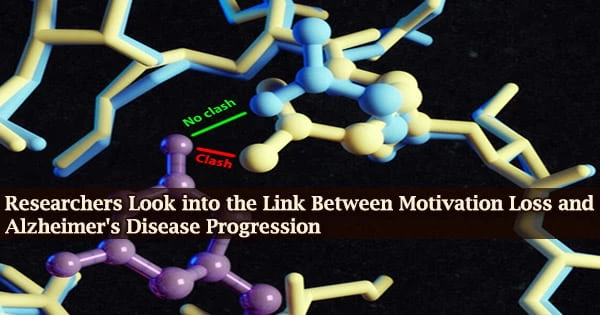Researchers at Indiana University School of Medicine are looking into why neuropsychiatric symptoms like anger and apathy develop in the majority of Alzheimer’s disease patients before memory loss.
The research was published in the journal Molecular Psychiatry and conducted by Yao-Ying Ma, MD, PhD, assistant professor of pharmacology and toxicology. When employed in an Alzheimer’s disease model, the researchers discovered a receptor in the brain that causes the loss of neurons and synaptic structure.
Alzheimer’s disease is a type of dementia that causes problems with memory, thinking, and behavior. Eventually, the symptoms become severe enough to interfere with daily activities. Symptoms of late-onset type occur in the majority of patients with the disease in their mid-60s. Early-onset Alzheimer’s disease is extremely rare and occurs between the ages of 30 and 60.
The study focused on the nucleus accumbens, a crucial brain region for incentive processing. This region, which is located in the ventral striatum, isn’t well-examined by Alzheimer’s disease experts, according to Ma; it’s mostly investigated to better understand motivational and emotional processes.
Previous research has revealed that in people with Alzheimer’s disease, the volume of the nucleus accumbens, as well as the cortical and hippocampal regions of the brain, is diminished.
The most common cause of dementia in elderly people is Alzheimer’s disease. Alzheimer’s disease is a degenerative condition in which dementia symptoms grow over time. Memory loss is minimal in the early stages of Alzheimer’s, but people with late-stage Alzheimer’s lose their capacity to converse and respond to their surroundings.
If we can postpone the pathological progression in one of the affected areas, like the nucleus accumbens; that may delay pathological changes in other regions.
Yao-Ying Ma
Ma, who is new to Alzheimer’s disease research, has a background in drug addiction research and synaptic communication, the process through which neurons in the brain communicate with one another.
Apathy, mood swings, and anxiety are some of the neuropsychiatric symptoms seen in people who abuse substances, and they are also seen in Alzheimer’s disease patients. Many more people under the age of 65 are infected with the disease.
If current population trends continue, the number of persons with Alzheimer’s disease will rise dramatically unless it can be efficiently treated or avoided. A person with Alzheimer’s disease lives on average 4 to 8 years following diagnosis, although it can last up to 20 years depending on other circumstances.
“Even before the onset of cognitive deficits, a significant number of Alzheimer’s patients start showing mood swings, and they have a greater chance to have symptoms of depression,” Ma said.
These neuropsychiatric symptoms, on the other hand, tend to appear before memory loss, but there are no effective treatments, according to Ma. She stressed the importance of figuring out why such symptoms exist and how they connect to cognitive deficiencies.
According to Ma, synaptic calcium permeable receptors (CP-AMPARs) were discovered in the nucleus accumbens of an Alzheimer’s disease model. Calcium can reach the neurons through the receptor, which is ordinarily lacking in that portion of the brain.
This causes a calcium overload, which causes the synaptic structure to break down. Calcium accumulation, in turn, causes a cascade of intracellular alterations that can be deadly to the neuron due to a positive feedback process that amplifies calcium overload.
Motivational deficiencies are caused by synapse loss in the brain. Knowing this, Ma believes that targeting and inhibiting these receptors in the brain could prevent or delay the emergence of Alzheimer’s disease-related neuropsychiatric symptoms, as well as cognitive difficulties.
“If we can postpone the pathological progression in one of the affected areas, like the nucleus accumbens,” Ma said, “that may delay pathological changes in other regions.”
















